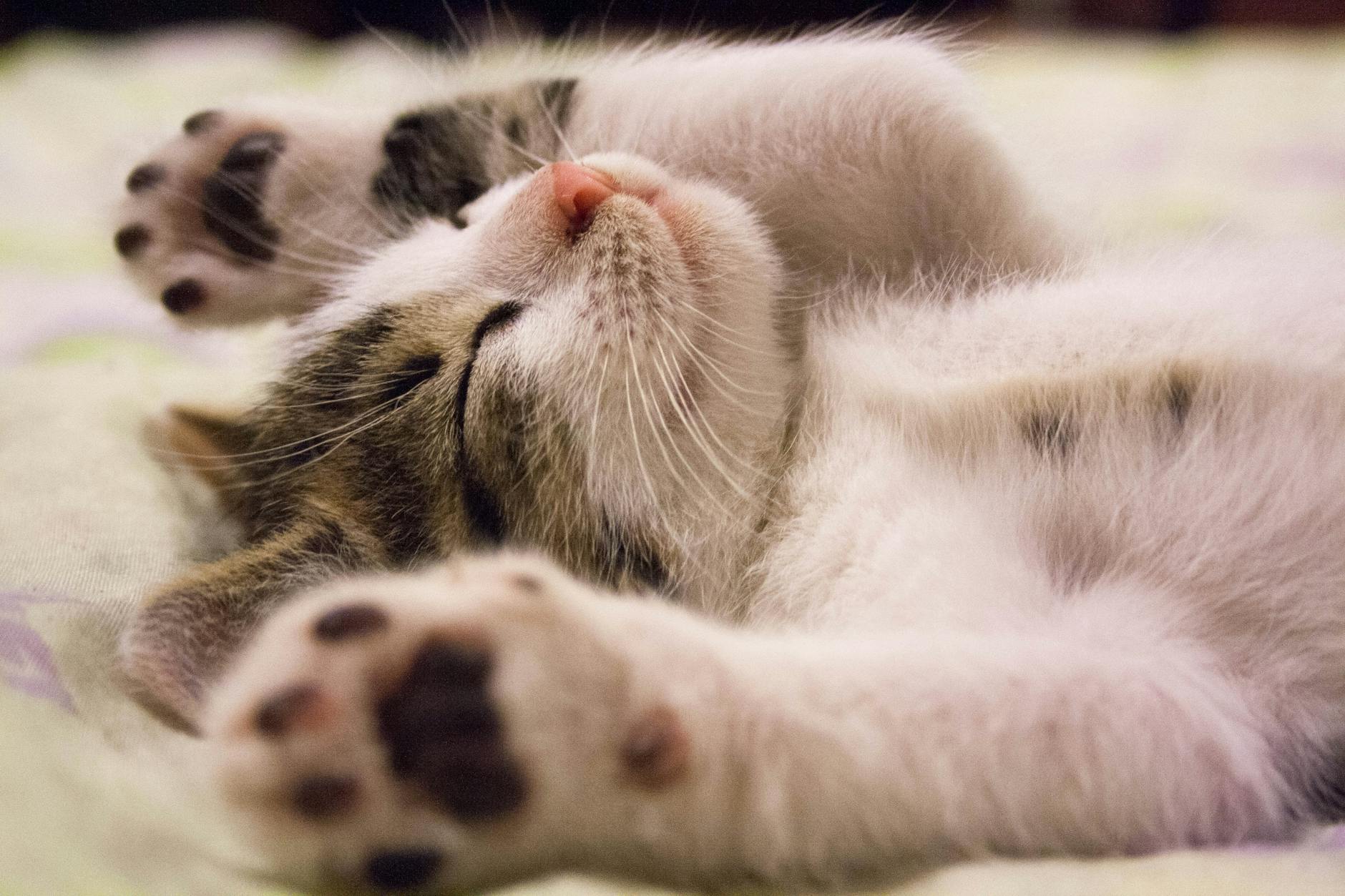Discovering blood in cats’ wee can be alarming for any pet owner. Hematuria, or the presence of blood in a cat’s urine, signifies an underlying health issue that requires immediate attention. Understanding the common causes, symptoms, and treatment options can significantly impact your cat’s recovery and well-being. In this blog post, we will explore everything from recognizing the signs of hematuria to effective management strategies, ensuring you are well-equipped to support your furry friend during this distressing time. Stay tuned as we delve deeper into this crucial topic.
Understanding Hematuria in Cats
Hematuria occurs when there is blood in cats’ wee, a condition that can signify underlying health issues. It’s essential for cat owners to recognize this troubling symptom. Here’s what you need to know:
- Definition: Hematuria refers to the presence of blood in the urine, which may appear as a change in color ranging from pink to red, or even brown.
- Significance: Blood in cats’ wee can indicate infections, urinary stones, or more severe conditions like tumors or trauma.
- Types of Hematuria:
- Gross Hematuria: Visible blood in the urine.
- Microscopic Hematuria: Blood is present but not visible; requires laboratory tests for detection.
Key Points to Consider:
- Symptoms: Aside from blood in urine, affected cats may exhibit frequent urination, straining to urinate, or signs of discomfort.
- Prompt Action: Always consult a veterinarian if you notice any signs of blood in cats’ wee. Early diagnosis is crucial in managing any underlying issues effectively.
Understanding hematuria can help you act swiftly, ensuring your cat remains healthy and happy.

Common Causes of Blood in Cats’ Urine
Blood in cats’ wee, also known as hematuria, can arise from several underlying conditions. Understanding these causes is crucial for timely treatment. Here are some common reasons:
- Urinary Tract Infections (UTIs): Bacteria can infect the urinary tract, causing inflammation and bleeding.
- Bladder Stones: These hard mineral formations can irritate the bladder’s lining, leading to blood in cats’ wee.
- Cancers: Tumors in the urinary tract can result in bleeding.
- Trauma: Injuries to the abdomen or pelvis can damage the bladder, introducing blood into the urine.
- Feline Idiopathic Cystitis (FIC): This painful bladder condition, often stress-related, can cause inflammation and hematuria.
| Cause | Symptoms | Treatment Options |
|---|---|---|
| Urinary Tract Infections | Frequent urination, straining | Antibiotics |
| Bladder Stones | Painful urination, licking area | Surgery or medication |
| Cancers | Weight loss, lethargy | Chemotherapy or surgery |
| Trauma | Abdominal pain, visible injury | Surgical intervention |
| Feline Idiopathic Cystitis | Painful urination, stress signs | Stress reduction, medications |
Identifying the specific cause of blood in cats’ wee will determine the most effective treatment approach. If you notice any signs, consult your veterinarian immediately.
Recognizing the Symptoms of Hematuria
Identifying blood in cats’ wee requires keen observation from cat owners. The presence of blood can manifest through several noticeable symptoms. Here’s a concise list of key indicators to watch for:
- Visible Blood in Urine: The most obvious symptom is the sight of red or brownish-colored urine.
- Frequent Urination: Increased frequency in urination, often without producing much urine, can signal a problem.
- Straining to Urinate: Cats may strain or show signs of discomfort while attempting to urinate.
- Painful Discomfort: Look for signs of pain, such as vocalizing or avoiding the litter box.
- Licking the Genital Area: Excessive grooming or licking may indicate irritation or discomfort.
- Changes in Behavior: A sudden change in activity level, lethargy, or decreased appetite may also accompany hematuria.
It is crucial to note these symptoms early, as they warrant immediate veterinary attention. Do not dismiss these signs, as timely diagnosis and treatment can address the underlying cause of blood in cats’ wee effectively.
Risk Factors and Prevalence in Different Cat Breeds
Certain cat breeds exhibit a higher prevalence of blood in cats wee due to genetic and environmental factors. Understanding these risks can help you stay vigilant. Here’s a breakdown of common risk factors and breed prevalence:
Genetic Predispositions:
- Persian and Himalayan: Prone to urinary tract issues due to their anatomy.
- Siamese: More likely to experience bladder stones, contributing to hematuria.
Age:
- Kittens: Risk is lower but possible due to congenital defects.
- Senior Cats: Increased likelihood of urinary tract infections and other diseases.
Gender:
- Male cats often face higher risks of urethral blockages, leading to blood in cats wee.
Lifestyle Factors:
- Indoor Cats: Generally, healthier but may still face stress-related issues.
- Outdoor Cats: Greater exposure to injuries and infections.
Understanding these factors can aid in early detection and management of blood in cats wee, ensuring your feline friend remains healthy and happy.

Diagnostic Procedures for Identifying the Cause
When a cat shows signs of blood in cats wee, it’s crucial to determine the underlying cause through diagnostic procedures. Veterinarians typically take a systematic approach to identify the source of hematuria.
Here are common diagnostic methods:
- Physical Examination: The vet assesses the cat’s overall health and looks for external signs of distress.
- Urinalysis: A crucial test that checks the urine for the presence of blood, bacteria, crystals, or abnormal substances.
- Blood Tests: These help evaluate organ function and detect any systemic issues that could lead to bleeding.
- Imaging Tests: Techniques such as X-rays or ultrasound visualize the urinary tract to identify blockages or structural abnormalities.
- Cystoscopy: This procedure allows direct visualization of the bladder and urethra, enabling the vet to detect lesions or foreign bodies.
In summary, comprehensively diagnosing blood in cats wee involves various methods, allowing for accurate identification and effective treatment of the underlying condition. Early detection improves outcomes, so prompt veterinary consultation is essential.
Treatment Options for Blood in Cats’ Urine
When you notice blood in cats’ wee, it’s essential to act promptly. Treatment options vary significantly based on the underlying cause, so a thorough veterinary examination is crucial. Here’s a breakdown of common treatments:
Medications:
- Antibiotics for urinary tract infections
- Anti-inflammatory drugs to reduce swelling
Dietary Changes:
- Special diets may help dissolve urinary crystals or stones.
- Increased water intake supports bladder health.
Surgery:
- Required in cases of severe obstructions or large stones.
- May address tumors or serious anatomical abnormalities.
Fluid Therapy:
- Administered for dehydration or to flush the urinary system.
- Helps dilute toxins or bacteria in the urine.
Behavioral Modifications:
- Reducing stress can alleviate some cases of bladder inflammation.
- Encouraging regular bathroom breaks can support healthy habits.
In summary, recognizing blood in cats’ wee demands an urgent response. Tailored treatments improve your cat’s health, so consult your veterinarian for the most effective approach. Always remain observant of your cat’s symptoms for the best outcomes!
Home Care and Management of Affected Cats
Caring for a cat with blood in cats wee requires attention and proactive management. Here are essential steps you can take to ensure your pet’s comfort and health:
Hydration: Ensure that your cat has access to fresh water at all times. Staying hydrated can help dilute the urine and flush out potential irritants.
Diet Adjustments: Consult your veterinarian about switching to a specialized diet. Some cat foods are formulated to manage urinary health and can reduce the recurrence of issues related to blood in cats wee.
Litter Box Maintenance: Keep the litter box clean and monitor for any changes in your cat’s urine. Regularly check for blood or changes in color.
Observe Behavior: Pay attention to any changes in your cat’s behavior, such as excessive licking of the genital area or straining to urinate. Report these to your vet.
Medication Compliance: If your vet prescribes medication, ensure that you administer it as directed. This adherence can significantly improve recovery.
By following these home care steps, you can help manage the condition and support your cat’s overall well-being while addressing the underlying cause of blood in cats wee.

Preventive Measures to Reduce Recurrence
Preventing blood in cats’ wee requires a proactive approach. By implementing simple strategies, cat owners can significantly reduce the risk of recurring urinary issues in their feline friends. Here are key preventive measures to consider:
Maintain Hydration: Ensure your cat drinks enough water daily. Use water fountains or wet food to encourage fluid intake. Proper hydration helps dilute urine, reducing the risk of crystals and stones.
Regular Vet Check-ups: Schedule routine veterinary visits for early detection of health issues. Annual exams can help identify changes that may lead to hematuria.
Healthy Diet: Feed your cat a balanced diet tailored to their age, weight, and health needs. High-quality, species-appropriate food supports urinary health.
Stress Management: Minimize stressors in your cat’s environment. Create a calm space with access to hiding spots and vertical spaces for climbing.
Litter Box Maintenance: Keep litter boxes clean and accessible. Regularly changing the litter encourages your cat to use it consistently, helping monitor for any unusual signs, such as blood in cats’ wee.
By incorporating these preventive measures, you can help ensure a healthier urinary system for your beloved cat.
Frequently Asked Questions
What are the common causes of blood in a cat’s urine?
Blood in a cat’s urine, also known as hematuria, can be caused by various underlying issues. Common causes include urinary tract infections (UTIs), which irritate the urinary bladder, bladder stones or crystals that can scratch the lining of the urinary tract, and trauma that can cause bleeding. Additionally, systemic diseases such as kidney disease, tumors in the urinary tract, and certain infections can also lead to hematuria. It’s important for pet owners to consult a veterinarian to identify the exact cause.
What symptoms accompany blood in a cat’s urine?
When a cat has blood in its urine, it may exhibit a range of symptoms beyond just the coloration of the urine itself. Common accompanying symptoms include frequent urination, straining to urinate, or crying out in pain while urinating. Cats may also lick their genital area more than usual, show signs of distress, or even exhibit changes in their behavior, such as hiding or being less active. Monitoring these symptoms closely is crucial, as they can indicate underlying issues that need veterinary attention.
How can blood in a cat’s urine be treated?
Treatment for blood in a cat’s urine depends on the underlying cause. If the issue is due to a urinary tract infection, a veterinarian may prescribe antibiotics to clear the infection. For bladder stones or crystals, dietary changes and increased water intake might be recommended, and in some cases, surgical intervention may be necessary to remove stones. Pain relief medications and anti-inflammatory drugs may also be administered to manage discomfort. It is critical to follow a veterinarian’s recommendations for treatment to ensure the best outcome for your cat.
When should I take my cat to the vet if I notice blood in its urine?
If you notice blood in your cat’s urine, it is advisable to consult a veterinarian promptly. Blood in the urine can indicate significant health issues, and delays in treatment can lead to complications. You should seek immediate veterinary care if your cat is also straining to urinate, appears to be in pain, or shows signs of lethargy or loss of appetite. Early detection and treatment are key to addressing any underlying conditions effectively.



